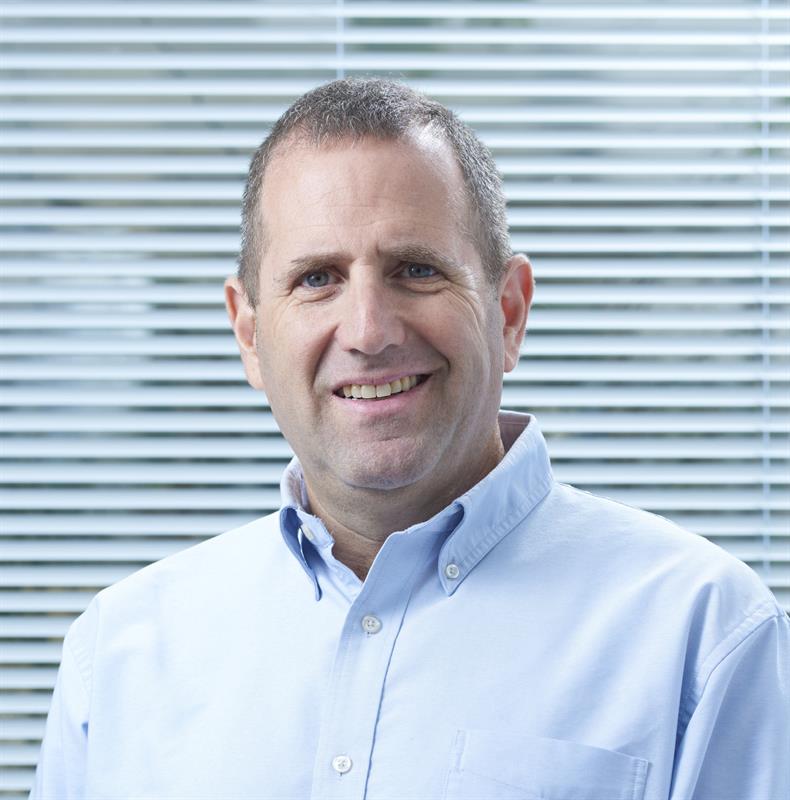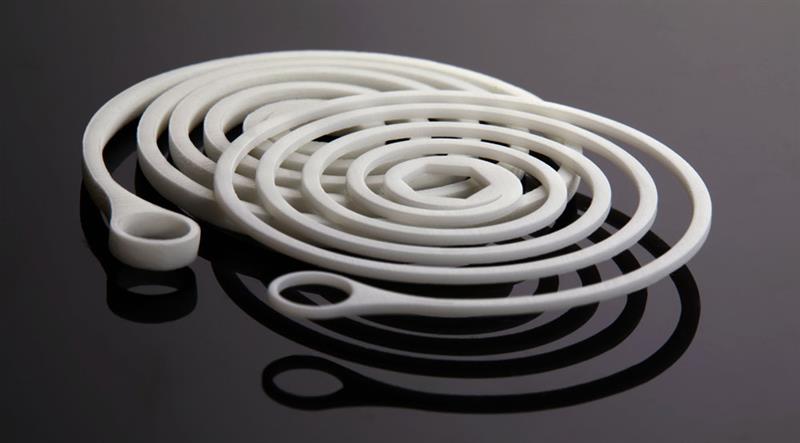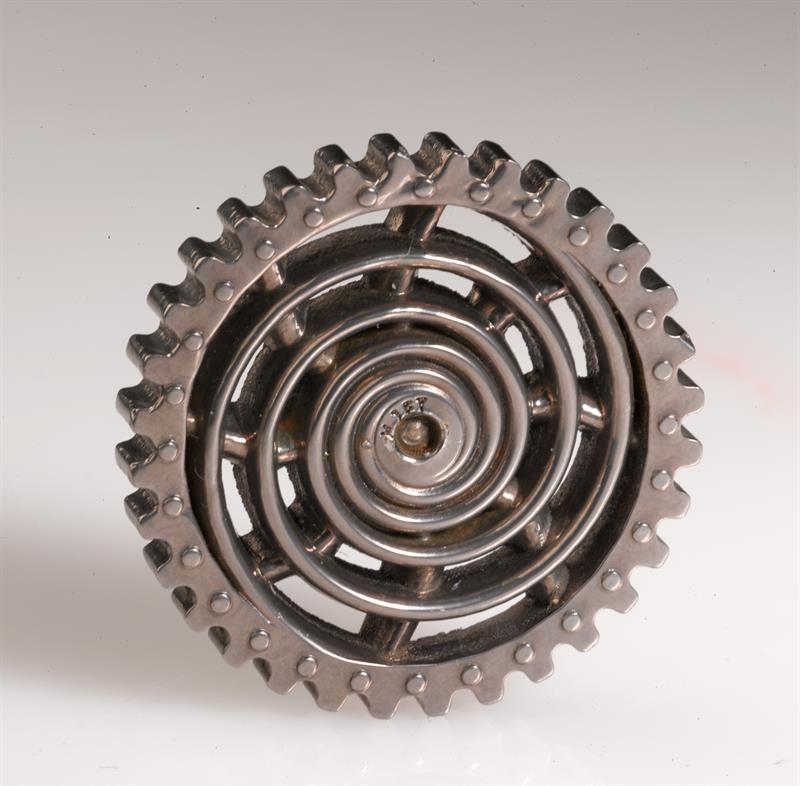The company has attracted a lot of attention and investment over the last few years because of its ‘NanoParticle Jetting’ technique. This stands out by using metal or ceramic nanoparticles in a liquid binder material that is subsequently burned out. This eliminates the powder and power-hungry lasers, making it simpler and – more importantly – safer to produce high-strength metal and ceramic parts.
Dror Danai (pictured), chief business officer at XJet, says: “We do use very high energy and temperatures of 200-300°C, but we are not sintering the metal in the process, this temperature is used for the evaporation of the liquid.”
 XJet has two machines, the Carmel 700 and the Carmel 1400 – with the number representing the size of the build trays: 700cm² and 1400cm². The machines are capable of jetting 220 million drops of the liquid ink per second through 1,200 nozzles arranged in 24 heads.
XJet has two machines, the Carmel 700 and the Carmel 1400 – with the number representing the size of the build trays: 700cm² and 1400cm². The machines are capable of jetting 220 million drops of the liquid ink per second through 1,200 nozzles arranged in 24 heads.
“Just to give you the speed of the electronics that we use, if you compare this to Hewlett Packard, they do about 30 million drops per second,” claims Danai. “And in higher quality than HP. They don’t get to our quality. Not even close.”
Danai goes on to explain that there are three areas in which XJet has excelled in its short life as a high-end AM company. These are: the mechanical properties of the parts it creates with its NanoParticle Jetting technique; the second is that this technique allows true freedom of design thanks to the ability to produce potentially any geometry; and the third is overall operational properties by doing away with potentially dangerous powders and using liquid instead, thereby simplifying the process.
Addressing the first of these areas, Danai says: “We create parts that are made of nanoparticles of real metals and real ceramics rather than additively manufacturing a simulation of the real material.”

He adds that if they were to use powder bed technology, they would be limited to using very large, uniform particles typically around 20 to 50 microns. This, according to Danai, means that the parts made with traditional methods, like direct metal laser sintering (DMLS) and electron beam melting (EBM), aren’t as strong as parts made by XJet.
“With ceramics we go down to between 40 to 80 nanometres to allow distribution of the material that allows the part to be like real ceramics rather than AM ceramics,” says Danai. “It can be seen in the microscope to have 100% density and the mechanical properties of a real metal or ceramic part, so that’s something new that we bring to the industry, more like traditional manufacturing than AM.”
Another benefit is speed, with Danai stating that their process works at five times the rate of laser metal 3D printers. He also suggests that XJet’s process provides a higher level of precision than their competitors, as well as part densities rivalling traditional manufacturing without the same porosity seen with other techniques. No vacuum or potentially dangerous gases such as argon are used, making for a safer work environment. And, unlike DMLS, NanoParticle Jetting doesn’t rely on a powder bed. Only the liquid material required to print the object and its support structures and, being contained in a bottle that simply plugs into the machine waste, cost is also reduced.
 “The price should be quite competitive. It might be slightly more than the average price, but if you consider the size of the tray, I think it’s the cheapest of its kind,” says Danai.“It [the Carmel 1400] will be about £650,000, though we haven’t fixed the price in pounds yet, but the size is 20 x 11 inches, compared to 10 x 10 inches of most systems in this range.”
“The price should be quite competitive. It might be slightly more than the average price, but if you consider the size of the tray, I think it’s the cheapest of its kind,” says Danai.“It [the Carmel 1400] will be about £650,000, though we haven’t fixed the price in pounds yet, but the size is 20 x 11 inches, compared to 10 x 10 inches of most systems in this range.”
He adds that the price per part should be cheaper simply because of the large build tray, so customers will get a return on investment faster.
To date, the first products to be manufactured for a customer in the dentistry industry have been crown implants. Indeed, Danai sees the medical device market as a prime one to adopt XJet’s technology.
“The feeling is that the healthcare industry, dental, medical devices and tools are definitely high on the list, and automotive, general machinery and consumer goods,” he says. “We’re exploring a few other industries like aerospace and tooling, but that’s more like one or two years down the road.”
As well as moving the technology out of the lab and into production, the company has implemented expansion schemes, building a site for a sub-contractor in Israel that will provide XJet with turnkey solutions. It is also opening what it claims is the largest AM centre in the Middle East, housing 10 Carmel systems in a 20,000-square foot warehouse. So, is the plan to become a print bureau?
“No, our philosophy is very simple: We are machine and material suppliers only,” Danai replies. “We don’t see XJet going into that business, we believe it’s a big strategic mistake that some more mature companies have made.
“It is very appealing to companies when they start to become mature, but we believe definitely for the next 10 years that we want to be able to support customers with this centre and be able to make more machines and tools, support more installations with this centre rather than compete with the best providers on the planet.”
Danai sums up: “The dream is there and the capacity to make things happen is there, now we just have to work very hard and make it happen.”





